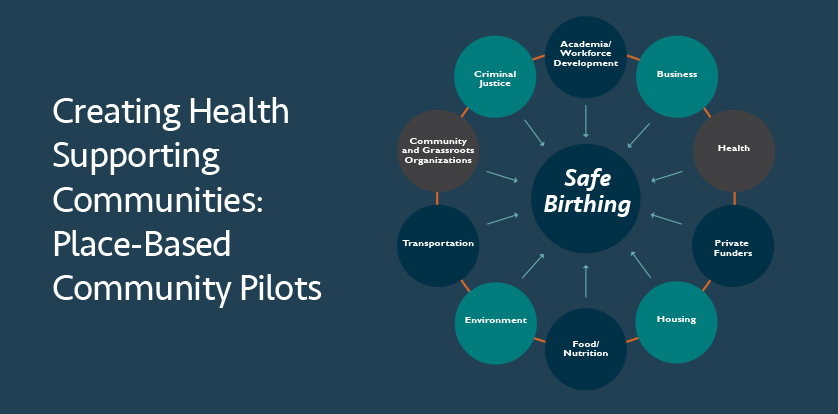"Every resident in this state, every woman of color, their communities and their families deserve a safe, healthy, respectful, and joy-filled prenatal, childbirth and child-rearing experience—and this vision needs to be realized for all women, starting now."
—NJ First Lady Tammy Murphy
Ecosystem
Nurture NJ is more than a plan. It is a clarion call for immediate action complete with the following Ecosystem roadmap. The Ecosystem is a map of the conditions that need to be built to ensure that all women in NJ are surrounded by environments that always support and never inhibit their health and wellbeing. These environments and conditions are not just important during pregnancy but are important every day of a woman’s life. While achieving systemic change will not happen overnight, we must start taking steps now, understanding that we are committing to a long-term path to transformational change in the conditions women are exposed to over their life span. We conceptualize this life span in three time periods: preconception, during pregnancy, and subsequent to pregnancy.
Healthy Women.
To accomplish the primary goal of improved maternal and infant outcomes and the reduction of inequities, the first area of action in the Ecosystem focuses on improving women’s overall health.
Equitable Service and Care.
The second relevant time period in the Ecosystem occurs during pregnancy and encompasses prenatal care and related services, as well as labor and delivery. Evidence-based and equitable care are key qualities of the care component and must be structured into the delivery process for all services.
Supportive Environments and Institutions.
The third time period in the Ecosystem map is the period subsequent to a pregnancy. A significant shift in ideology is necessary to achieve a population of healthy women and develop sustained improvements in maternal reproductive and birth outcomes. All parts of the system must move away from an emphasis on women’s health solely as it relates to reproductive potential to a fully realized life course approach.

Becoming the Safest Place to Give Birth: What Will New Jersey Need?
Studying countries that currently are the safest places to give birth makes it clear that more than health care is needed. Using the Ecosystem map as a guide, all stakeholders can embrace a mindset that supports the implementation of a multitude of innovative approaches. A move to incorporate a stronger focus on policies affecting social conditions opens up new possibilities for impact on a wider range of factors affecting health and requires a greater reliance on high-level, multisector collaboration. This is not impossible and has already begun in New Jersey. See Key Milestones for accomplishments to date.
Who Should Be Involved in Making New Jersey the Safest Place to Give Birth?
Healthy Women entails preventive, wellness, and behavioral health care for women of childbearing age. The rationale for this focus is that healthy women are more likely to have healthy pregnancies, thus planning pregnancies and addressing health concerns that may affect pregnancy should be in the domain of women’s health before a pregnancy occurs. Stakeholders relevant to this time period may include federally qualified health centers, Planned Parenthood, behavioral health providers, emergency rooms, private providers, public and private insurers, employers, government, health departments, women and their partners, and family members.
Equitable Service and Care entails all the services and care relating to preparation for pregnancy, childbirth, and child rearing. Pregnant women in New Jersey are covered by a variety of payers -- private insurers, Medicaid. In this period, employers, and community resources such as food stores, businesses, safe and affordable housing, etc. are important forces that influence women’s access to coverage and/or services. Additionally, women interact with a variety of prenatal care medical providers, e.g., physicians, midwives, nurse practitioners, nurses, as well as social and other support providers including community health workers, doulas, WIC, Healthy Start, mental and behavioral health providers, social workers, and breastfeeding peer counselors.

The Supportive Environments and Institutions period entails the life course period for women who are not pregnant and any children they may have birthed. This time period contains all of the stakeholders named under the preconception period as well as many of the programs and stakeholders in the prenatal period. This time period contains the set of influences that will most impact a woman’s or her infant’s health and impact it for the longest period of time. Thus, employers, business, and community conditions create environments and institutions that either support health or not.
In sum, everyone in the State of NJ has a role in ensuring healthy mothers and babies.
